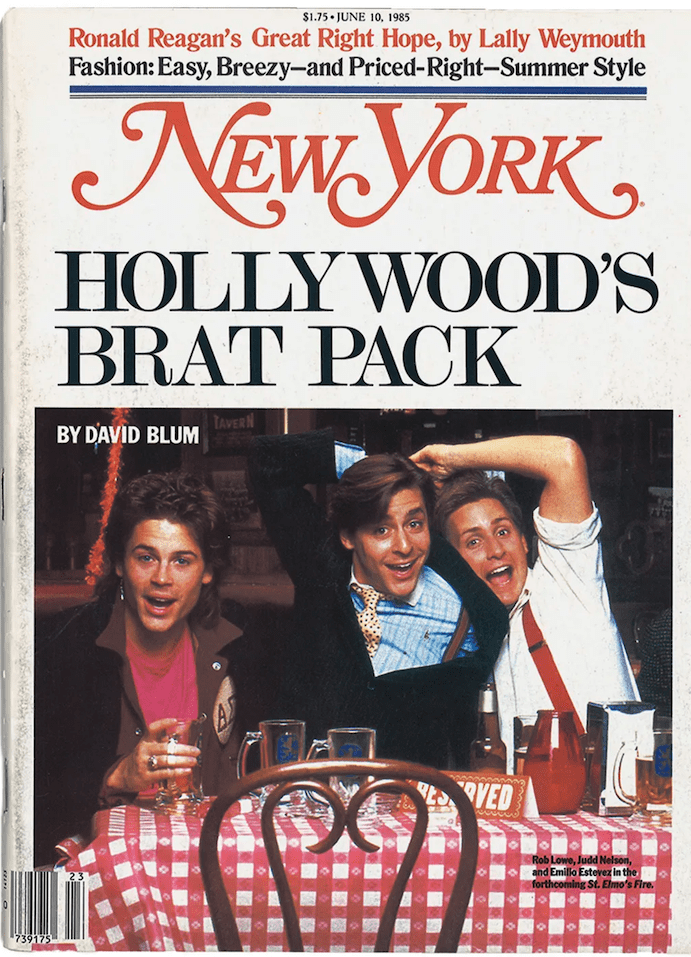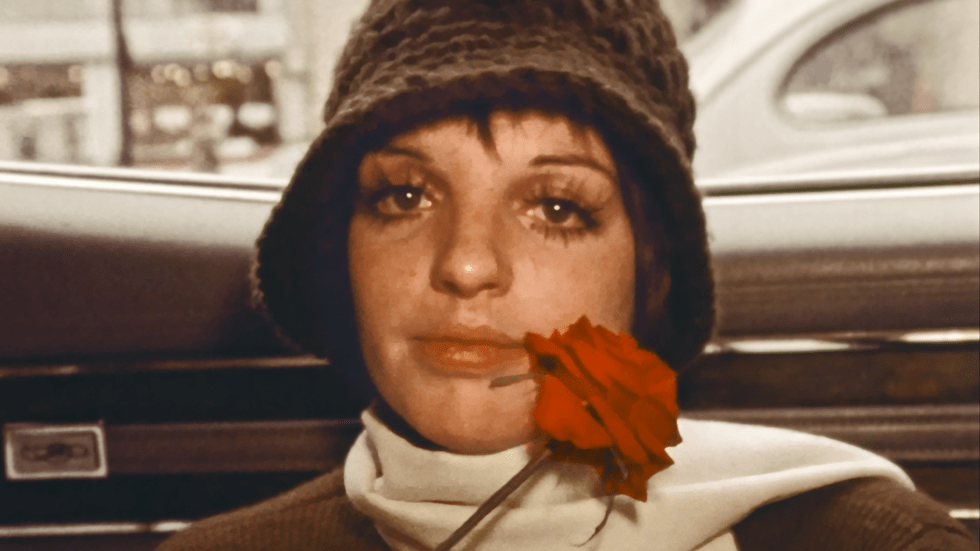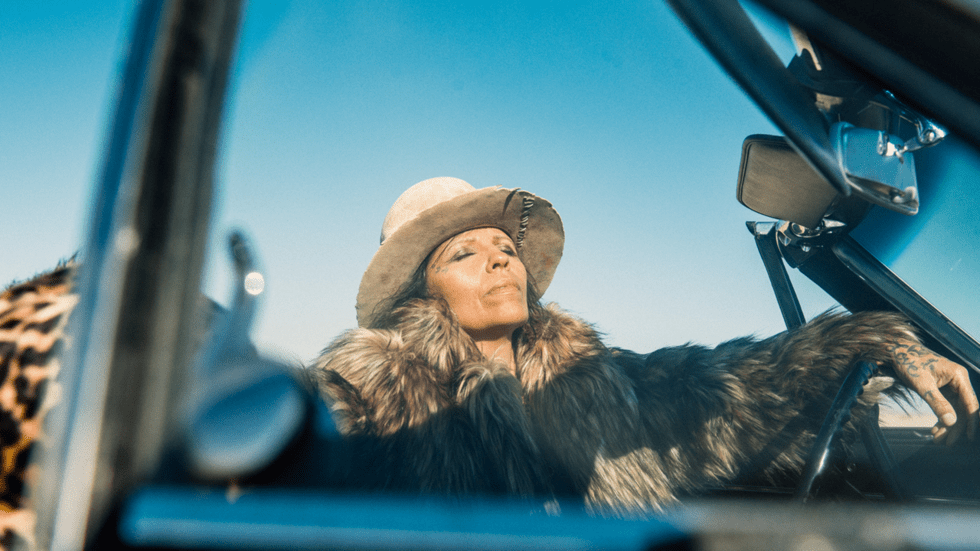There are so many documentaries which profile a single person–an artist, musician, writer, politician–or group of allied people that I find it useful to introduce an index I will call “the hagiography index of personal profile documentaries.” Using a scale of 0 to 10, I will let 0 represent “total hagiography,” i.e. a complete idolization of the subject, with no criticism from either the filmmaker or persons contributing to or being interviewed by the film. 10 represents “total vilification.” So, a balanced documentary on the scale would get a score of 5. Any good documentary portrait will wind up being near the middle of the index. I’m not the first critic (see this and that) to talk about the problem with hagiography (originally meaning biographies of saints) and I certainly won’t be the last. But I’m finding this scale to be useful in evaluating the value of films in this sub-genre. Even a bad documentary can have some merit, of course, especially if it includes valuable footage not elsewhere available. I’ll employ the tool now to evaluate the seven documentaries (of this sub-genre; more reviews of other docs to come) I saw this past week at the Tribeca Festival.

I have a vivid memory of reading the 1985 New York Magazine cover story that coined the phrase “Brat Pack.” That June I read David Blum’s article at the Columbia Street Bakery in Chapel Hill, North Carolina. I was working as a projectionist a block away at the Varsity Theaters and writing reviews for the Raleigh, North Carolina newsweekly “The Spectator” while the main film critic, the great Godfrey Cheshire, was vacationing in Greece. The magazine piece, which began as a profile of Emilio Estevez, was broadened to include several other young actors who were beginning to star in many Hollywood films: Anthony Michael Hall, Rob Lowe, Demi Moore, Judd Nelson, Molly Ringwald and Ally Sheedy. Recall that in the 1960s studios turned to youthful directors like Dennis Hopper and others to make films about hippies, protests, drugs, motorcycles and sex. That didn’t last long. Then, in the mid-1980’s John Hughes and others began casting young actors to attract a young audience again.
Later that month I would review “St. Elmo’s Fire.” It was released on June 28, the same month as the publication of the article. I went with a friend and we both caught ourselves rolling our eyes during most of the film.
I wrote then: “The ensemble players of ‘St. Elmo’s Fire’ are members (some are initiates) of what is being called the ‘brat pack,’ the young stars now enjoying box-office clout in a trend encouraged by the success of films like ‘Taps,’ ‘Risky Business’ and especially ‘The Breakfast Club,’ which was quickly nicknamed ‘The Little Chill’ for its junior-sized version of a period-exploring formula: linking representative character types together in a common place and seeing what happens.”
I finally dismissed the film as “the kind of movie to take a trusted friend to and exchange nasty comments with about the people onscreen, a function for which, I noticed, the pauses are situated quite conveniently.”
I never watched it again and I never will. (I also realize now that I was a much better writer in 1985!) So I wasn’t expecting much from “Brats,” the new doc (currently airing on HULU) directed by one of the most serious brat pack actors Andrew McCarthy. I was wrong! It is a ruthlessly honest self-examination by him as he reaches out to fellow actors branded with a name that stuck to them and constrained their careers in ways that were unfair to their talents. (Some, like Rob Lowe and Demi Moore, reinvented themselves.) Besides interviewing Esteves, Ally Sheedy, and Timothy Hutton, McCarthy reached out to cultural critics Malcolm Gladwell and indiewire’s Kate Erbland (an authority on 1980’s and 1990’s film culture.) An interview with the original journalist is conducted without an ounce of spite.
But where is Judd Nelson? A running joke in the documentary is that no one can get in touch with him. True story. When I was working at DEG studios a year later in Wilmington, North Carolina, Nelson starred in a really bad Bob Clark film called “From The Hip.” He briefly dated my roommate Heidi, an extra on the film, and one day I walked into our kitchen to see them having coffee. I had to get to work and just said hello. I didn’t like him them and I still don’t like him.
HI: 5

Montreux, Switzerland is the home of what Quincy Jones calls “the Rolls Royce of music festivals.” He and many other musical greats talk at length in “They All Came Out To Montreux” about how charismatic founder Claude Nob popularized and transformed what started as a premiere jazz festival to include pop and rock over the years. Unfortunately there is too much time spent praising Claude and too little of the extraordinary (mostly unseen) music performance footage.
The title, of course, refers to the song “Smoke on the water” by pioneer metal band Deep Purple about a concert they were to perform at but “some stupid with a flare gun/burned the place to the ground.” The performance stage was rebuild as the legendary Stravinsky stage and Nob deserves incredible accolades for taping every performance and creating a mind-blowing archive. But the testimonials about him in the film become quickly repetitious and non-informative. Maybe a DVD release with tons of extra performances will increase the value of this release.
HI (Hagiograpy Index): 3

In “Desire: The Carl Craig Story,” Roni Size, Laurent Garnier, DJ Minx, Kenny Larkin, Moritz von Oswald and others help tell the story of legendary Detroit techno pioneer Carl Craig. Craig’s piano teacher mother bought him his first guitar but he later became fascinated with club music and became a leading figure in the second wave of Detroit Techno. His 1992 track “Bug in the Bassbin” has been called “the blueprint for what drum ‘n’ bass was to become in England.” (source)
55-year-old Craig is an insightful participant in the film but I wish there had been more discussion about his technique.
HI: 3

Director Bruce David Klein begins “LIZA: A Truly Terrific Absolutely True Story,” a dazzling tribute to legendary performer (now 78-years-old) Liza Minnelli by recounting the guidance given to her by godmother Kay Thompson after the tragic death of Liza’s mother Judy Garland. In a long, famous career her great achievements and talent were often overshadowed by salacious, unfounded tabloid stories the shy, often naive performer was unprepared to counter.
The highlight of the film is a great visual and aural break-down of her Oscar-winning performance as Sally Bowles in Bob Fosse’s 1972 film, “Cabaret,” which made her a star. It’s also remarkably insightful about the evolution of her dancing and singing and her fashion association with the great dress designer Halston. Friends attest to her modesty and support of friends. (She famously subbed for Gwen Verdon in a production of “Chicago” with no advance publicity.)
Liza admits with great candor to having had bad luck choosing men. At the screening I attended the audience roared with laughter when someone offered that Minnelli had no idea that her first husband Peter Allen was gay!
Another huge bonus in the doc are many never-seen-before hours of BTS footage of Minnelli and company in the 1970’s shot by ex-husband Jack Haley Jr.’s crew. The film, however, suffers from offering testimonies from only a handful of people. I would have liked to have heard from a broader list of Liza collaborators. For example, Martin Scorsese captured one her best performances in “New York/New York” and he seems eager to contribute to anything about the history of film–why isn’t he here?
HI: 3

“Linda Perry: Let It Die Here” is a brave, honest self-examination of the many inspirations and demons which have fueled the already legendary 59-year-old music producer’s career. Linda first came to prominence as the lead singer of 4 Non Blondes and after that produced hit songs by a variety of artists: Dolly Parton, Pink, Christina Aguilera and Brandi Carlile.
Director Don Hardy uses animated sequences to illustrate some of the most painful memories of 59-year-old Perry’s drug abuse and other struggles and physical limitations. “I eat food to survive. I don’t understand enjoying the taste,” she admits while drinking a protein shake! Linda gives a master class of sorts as she demonstrates her production method of helping songs evolve: it’s not a whole lot different than when I sit at the piano and vamp in some chords but she has a genius for finding the perfect orchestration for a song or soundtrack for a film. And she’s never won a Grammy? What the fuck is up with that?
HI: 5

In the recent HBO series “The Sympathizer” (which I highly recommend!) a Vietnamese refugee is infuriated by his daughter’s performance of a disco song at a club. Lynda Trang Đài, the “Vietnamese Madonna,” and one of the two artists featured in “New Wave,” tells the story of a similar experience in her own career when her father admonished her for being “too sexy” on stage.
Director Elizabeth Ai is a second generation Vietnamese/American. Estranged from her mother, who fled Vietnam in 1975 and settled in Los Angeles, Ai made this remarkable and moving film to tell the story of her generation’s embrace of Vietnamese “new wave” music of the 1980’s as a strategy for assimilating to American culture. Ian “DJ BPM” Nguyen (who has DJ-ed for four decades) and Trang Đài both relate what many second-generation refugees know: the parents tend to be resistant to the culture of their new home while their children often imitate it in a unique blend of their dual identities. While their parents preferred the traditional music offered in a program called “Paris at Night,” they preferred Vietnamese expats performing covers of American new wave songs like Roxanne’s “Boys in Black” and other spiked hair singers. (The popularity of the hairspray Aquanet is noted!)
Ai gets her subjects to open up with touching stories about conflicts and reunions with parents and the limitations of their career choices: Lynda, who still tours, had to open a bánh mì sandwich shop to support her family. (Recreated scenes are used to illustrate some moments.)
The director’s own reunion with her mother, now living in Wyoming, details how the horrors of war made it difficult for mom to succeed as a parent in her new home. The only thing missing from this excellent doc is perhaps more performance footage of the 80’s acts it covers but it was all captured on low-fidelity cassettes and VHS tapes. Note: Director Elizabeth Ai received a “Special Jury Mention for New Documentary Director” at the Festival for this film.
HI: 5
